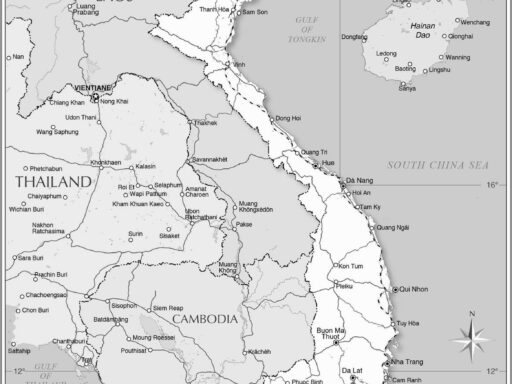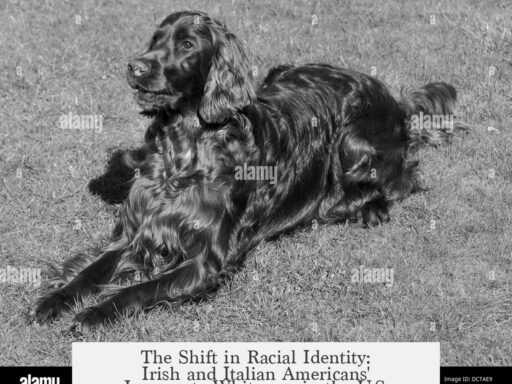The hard “R” sound in American English, known linguistically as the retroflex approximant, developed from the Old English trilled or tapped /r/, diverging phonemically from the rolling or soft “R” sounds found in many other languages like Spanish and British English.
This retroflex approximant involves curling the tongue tip back near or behind the alveolar ridge without creating turbulent airflow. It differs from the Spanish “rolled R,” produced as a trill or tap, and the British English alveolar approximant, where the tongue tip is near but not curled back. Despite perceptions, the retroflex approximant is not unique to American English; it occurs in several unrelated languages worldwide, including some Brazilian Portuguese dialects, Indian languages, Australian Aboriginal languages, and even Mandarin Chinese’s “r-colouring.”
Historically, Old English pronounced /r/ as a tap or trill, similar to the rolling Spanish /r/. Over centuries, this shifted to an approximant form in English. The exact timing is unclear due to stable spelling conventions over time. Two primary variants of the approximant arose in English: the alveolar approximant common in traditional British English and the retroflex approximant prominent in American English.
- The alveolar approximant positions the tongue tip near the alveolar ridge, producing a softer “R.”
- The retroflex approximant requires the tongue tip to curl back or rise behind the alveolar ridge, producing a harder “R.”
No phonemic contrast exists that distinguishes these two /r/ pronunciations, making them practically interchangeable in American English. The retroflex variant may have originated from English dialects, such as those from the West Country, where some dialects feature retroflex /r/. This regional background possibly influenced early American English settlers’ speech patterns, leading to the hard “R” sound’s persistence in the United States.
Both the rolling /r/ as in Spanish and the American hard “R” descend from Middle English /r/, which was itself similar to the modern Spanish or Italian trill. Over time, English speakers transitioned from trilling to approximant pronunciations, following natural sound change patterns. The trajectory diverged, with American English favoring the retroflex or bunched tongue positions, while British English typically uses the alveolar approximant or, in many dialects, even drops the /r/ sound (“non-rhotic” accents).
The American English /r/ is notably complex, with more than 30 variants depending on context. This includes differences in:
- Position within words (initial, medial, final)
- Combination with vowels (prevocalic vs. vocalic “er” sounds)
- Presence in consonant clusters (e.g., “gr,” “tr,” “pr”)
Two correct articulations coexist among American speakers:
- Retroflex production, curling the tongue tip back.
- Bunched or retracted production, where the tongue forms a hump near the soft palate.
This complexity partly explains why the /r/ sound is commonly mispronounced by children and requires speech therapy more often than many other phonemes. Correct production usually develops by age 7 or 8, although some children acquire it earlier.
Sound changes like the development of the retroflex approximant in American English typically arise from unpredictable phonetic evolution rather than explicit historical events. Changes result from natural variations in articulation, dialect contact, and language drift. While demographic factors, such as settlers’ origins, may influence pronunciation shifts, it is often difficult to identify a single cause or precise timeline for such transformations.
| Feature | Retroflex Approximant (American English) | Alveolar Approximant (British English) | Rolling / Trill (Spanish) |
|---|---|---|---|
| Tongue Position | Tip curled back behind alveolar ridge | Tip near alveolar ridge | Tip taps or vibrates against alveolar ridge |
| Sound Type | Approximant (no vibration) | Approximant (no vibration) | Trill or tap (vibratory) |
| Occurrence | Widely in American English | Widely in British English | Widespread in Spanish and related languages |
| Phonemic Contrast | Absent among English dialects | Absent among English dialects | Trill vs. tap contrast phonemic in Spanish |
| Complexity | Multiple variants, including bunched /r/ types | Relatively simpler articulation | Relies on trilling or tapping tongue |
The American hard “R” sound is part of a rich phonetic lineage. It shares roots with the rolling /r/ sounds of Romance languages but underwent a distinct phonological evolution. This shift entails a move from a trill or tap to various approximant forms, influenced by dialect contact, speaker variation, and articulatory preferences.
- The retroflex approximant is not unique but common globally, contrary to some claims.
- English /r/ started as a tap or trill in Old English and evolved into approximants.
- American English favors retroflex or bunched /r/ forms; British English favors alveolar approximants or non-rhotic forms.
- Complex articulatory variants of /r/ exist in American English, complicating acquisition.
- Sound changes like this develop naturally over time without clear direct historical causes.
What is the “hard R” sound in American English?
The hard R is known as the retroflex approximant. The tongue curls back behind the alveolar ridge without creating friction. This produces a unique sound different from the rolling or tap R found in Spanish or British English.
How did the hard R develop from earlier English sounds?
Old English used a tap or trill R, like Spanish. Over time, this shifted to an approximant. The approximant could be alveolar or retroflex. The hard R in American English likely evolved from this change.
Is the American hard R unique worldwide?
Not exactly. The retroflex approximant appears in several languages like some Brazilian Portuguese dialects, Australian Aboriginal languages, and in Mandarin Chinese. It’s more common than often thought.
How is the American English R pronounced differently from British English R?
British English usually uses an alveolar approximant, where the tongue tip is near the alveolar ridge. American English often uses a retroflex approximant, where the tongue curls back. Both sounds are quite similar.
Could the hard R have roots in English regional accents?
Yes, West Country English accents in England use a retroflex R. Some speculate this may connect to the American hard R, depending on colonists’ origins, but the exact link is unclear.
Why is the American R sound considered complex?
There are many variants of R sounds in American English. It involves either retroflex or bunched tongue positions. It’s often difficult for learners and children, making it a common speech therapy target.




